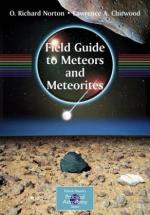|
This section contains 1,132 words (approx. 4 pages at 300 words per page) |

|
Meteors, commonly (and inaccurately) called shooting stars, are particles of interplanetary dust that burn up as they enter the Earth's atmosphere from space. Meteorites are larger pieces of interplanetary matter that are too large to burn up entirely and therefore survive the passage through the atmosphere to the surface of the Earth.
Although these objects attracted the attention of early astronomers, their origin was anything but clear. The Greek philosopher Aristotle speculated that they were an atmospheric phenomenon akin to lightning. Many people believed the stones that occasionally "fell from the sky," accompanied by spectacular flames, had a supernatural origin or were thrown into the air by exploding volcanoes. At the close of the 1600s, neither shooting stars nor objects falling from the sky could be explained.
In 1714, the English astronomer Edmond Halley finally shed some light on the origin of meteors. Halley examined...
|
This section contains 1,132 words (approx. 4 pages at 300 words per page) |

|


